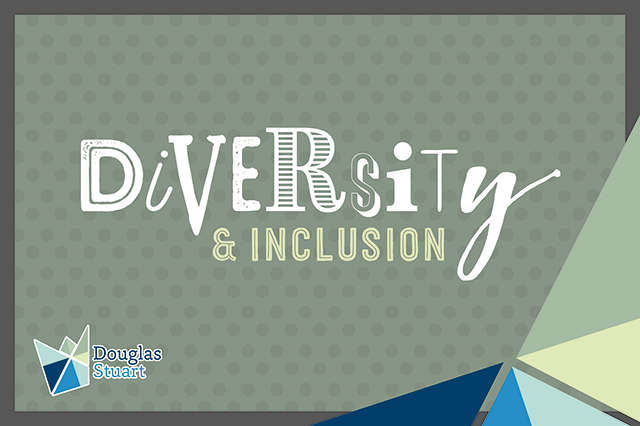I once worked for a successful company who had discovered a winning formula for recruiting staff – they identified a ‘ right type’ of candidate, measured all new hires against that criteria, and the candidate who was the closest match was taken on. High on the list of criteria were the following characteristics – white, male, middle class, young, an interest in sport and after work socializing. It wasn’t a written hiring policy, but one that was endorsed by all levels of management.
And it worked. The company grew, and its profits soared. Everyone was happy.
Well, almost. It was a great place to work if your experiences, attitudes, thoughts and beliefs matched those of your peers; less comfortable for those who didn’t.
It was a culture where dissent and difference, if it emerged, were largely managed out. And that’s not a good long term strategy for a healthy and happy business. How do we respond to a diverse and increasingly global market place, if our organization has a tunnel vision?
Times have changed, as have the company in question, and any organization worrying about their talent pool, is worrying about diversity too. There is plenty of research to suggest that it’s not the talent pool that’s narrow, but how we recruit from it.
Accessing a greater breadth and diversity of talent has become an economic imperative, and, let’s face it, a moral one too. The increase in dissent and difference that we may find as the workforce becomes more diverse, may be the very factors that increase employees level of engagement and create a more robust company culture.
Let’s consider three good reasons why every business should be thinking about diversity
1. Diversity is a moral and ethical issue
A no brainer perhaps but – Equal opportunities for everyone? It’s just the right thing to do isn’t it?
We’ve come a long way from the ‘MadMen’ offices of the 1950’s, and even from the lad culture of the 1990’s, but there is still a lot to do. Creating a diverse workplace means more than just acknowledging or tolerating differences. It’s a set of conscious practices that go beyond including a ‘diversity statement’ in your list of company values. It’s a commitment to identify what you are going to do it, and how, as an organization you will be held accountable to that commitment.
Diversity fact: 61% of top UK Energy companies have all male Board
2. Diversity is good for business.
Latest research shows that organizations that commit to a diverse leadership are more successful. In McKinseys ‘Diversity Matters’, companies in the top quartile for racial and ethnic diversity are 35% more likely to have financial returns above their respective national industry medians.
Why?
Well, we live in a global economy, increasingly connected to one another, and it makes sense that those organizations who can respond to this market place, with greater cultural sensitivity, understanding and knowledge, might perform better. Companies that embrace diversity have a competitive edge in accessing new markets, gaining market share, and top, global talent.
Diversity fact: Companies are 15% more likely to perform better if they are gender diverse.
3. Diversity gives you access to a greater talent Pool
If you are recruiting from a talent pool that is homogenous and narrow the chances are you are missing out on a diverse set of skills, experiences, perspectives and background. Diversity is a key driver of innovation, and without being challenged by new ways of thinking, and new modes of operation, organizations can grow stagnant.
What’s surprising is that so many diversity recruitment programs fail. According to a recent study by the Harvard Business Review, these programs used by companies to promote diversity are ineffective, unintentionally activating bias, rather than alleviating it.
Why is that? Sometimes mandator diversity training can have the reverse effect on employees. It can be viewed as a negative commentary on Managers ability to source candidates, authoritative and a ‘box ticking’ exercise. It’s like pointing a finger at someone and saying ‘It’s your bias, not ours’.
So, what does work? Studies show that voluntary training, and programs that have a positive approach to encouraging diversity have much better success rates. For instance, when Managers are asked to volunteer to become ‘Diversity Champions’ and are enlisted to find a ‘greater variety of promising colleagues’, it means that initiatives like University recruitment programs to target women and minority groups tend to have better results.
Diversity fact: In a global survey, 85% corporate diversity and talent leaders agreed that ‘A diverse and inclusive workforce is crucial to encouraging different perspectives and ideas that drive innovation”.
In the past, one of the biggest business benefits of having a diversity program was the legal mitigation it provided against being sued by former employees. Wal-Mart used the very existence of its anti-discrimination policy as a defense in a class action gender discrimination case. Research by Teresa Dover, Brenda Major and Cheryl Kaiser found that the presence alone of diversity training can lead white men to believe that women and minorities are being treated fairly by their organizations.
Clearly, this kind of lip-service diversity, or an inclusion program that is framed as a protection from legal liability is not good enough.
Organizations’ now have to concentrate on finding ways of becoming truly inclusive, using diversity as a way of looking at all aspects of the businesses operations and processes. Diverse groups outperform homogenous ones, and with an increasingly diverse customer base, it makes sense to create teams that can respond effectively to their needs – with emotional and cultural intelligence.


